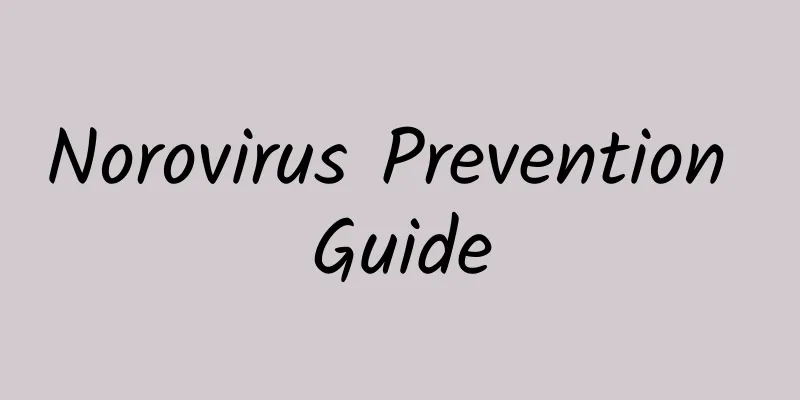Dietary Guidelines for Gout and Hyperlipidemia

|
As living standards improve, high uric acid, high blood sugar, high blood lipids and other diseases of affluence are becoming more and more common. In addition to drug treatment, these metabolic diseases also require attention to diet control in life. Many people think that gout patients cannot eat seafood, and hyperlipidemia patients cannot eat fat. In fact, this is a very one-sided view. This article systematically tells you what gout and hyperlipidemia patients can and cannot eat. | What is gout Gout is a recurrent inflammatory disease caused by increased purine biosynthesis and metabolism, excessive uric acid production or poor uric acid excretion, resulting in increased uric acid in the blood, and urate crystals deposited in the synovium, bursa, cartilage and other tissues. It is a group of heterogeneous diseases caused by the deposition of monosodium urate crystals (MSU) or uric acid in the extracellular fluid in a supersaturated state, resulting in the deposition of crystals in tissues. Its clinical features are: characteristic acute arthritis, tophi, and interstitial nephritis caused by hyperuricemia and urate crystals and deposition. In severe cases, joint deformities and dysfunctions may occur, often accompanied by uric acid urinary stones. Gout can be divided into four stages: asymptomatic hyperuricemia, acute gouty arthritis, during an attack, tophi and chronic gouty arthritis. During the acute stage, the affected joints will become hot, dark red, and swollen, and feel a knife-like or biting pain. If not treated properly, the pain will persist or spread to other joints. Dietary principles for gout 1. Maintain an ideal body weight. Being overweight or obese will increase blood uric acid levels. Losing weight can lower blood uric acid levels, but weight loss should be gradual, otherwise it can easily lead to ketosis or acute gout attacks. 2. Moderate intake of carbohydrates. Eating carbohydrate-rich foods such as rice, steamed bread, pasta, etc. can promote the excretion of uric acid. 3. For the right amount of protein, you can choose high-quality proteins such as milk and eggs, as well as plant proteins. If it is lean meat, chicken or duck meat, etc., you should boil it and remove the soup before eating, and avoid eating stewed or braised meat. 4. Low fat and low salt. Eat less fat, because fat can affect the excretion of uric acid. Avoid eating fatty meat, pork, beef, mutton, and fat poultry, and use less oil when cooking. The sodium in salt promotes the precipitation of uric acid. Gout patients often have high blood pressure, so a low-salt diet is recommended. 5. Drink plenty of water. Water can help excrete uric acid from the body. Therefore, if the kidney function is normal, you should drink about 2000ml~3000ml of water every day to promote the excretion of uric acid. Water intake should be mainly boiled water, light tea, and mineral water. 6. Limit purine intake. A high-purine diet can increase blood uric acid concentration and often cause acute gouty arthritis attacks. Animal foods contain a lot of purine. | What can't gout patients eat? For people with gout, it is recommended not to eat the following types of food: 1. Beer Patients with acute gout attacks, poor drug control or chronic tophaceous arthritis should strictly avoid alcohol. It is well known that drinking alcohol increases the risk of gout attacks, especially beer, while the risk of red wine is relatively small. The specific order is aged rice wine > beer > ordinary rice wine > white wine > red wine. 2. Seafood The foods that you absolutely cannot eat during the acute phase include (high purine): shellfish, oysters, crabs, yellow croaker, etc. The foods that you can eat in small amounts (medium and low purine): kelp, jellyfish, sea cucumber, cod, turbot, tuna, sea bass, etc., as well as river seafood such as crayfish, river shrimp, and hairy crab. You can try a small amount of the above-mentioned medium and low purine seafood during the remission period. But you must not eat them during a gout attack. Other seafood, especially shellfish and mollusks, are foods rich in purine, which will significantly increase blood uric acid and aggravate the condition. 3. Animal offal For example, pork liver, duck liver, duck heart, pig heart, etc., as well as various red meats (beef, lamb, pork, etc.). Animal offal contains very high purine, so it is not recommended to eat it during the acute attack of gout. It also contains cholesterol and fat. Most gout patients have fatty liver, hyperlipidemia and other diseases, so it is not recommended to eat foods with high cholesterol. When gout patients are in remission or hyperuricemia, red meat intake should be controlled within 50 grams a day, but some skinless white meat can be eaten in moderation. 4. Foods with lots of condiments Gout patients are not recommended to eat too much pepper, Sichuan pepper and other condiments, because when gout attacks, the joints will become red, swollen, hot and painful, and eating Sichuan pepper will aggravate the pain. 5. Foods with high heat For example, angelica, cinnamon, and wolfberry. Many people like to drink water with wolfberry and angelica, which is very bad for people with gout and can easily aggravate gout symptoms. 6. You can eat tofu and soy milk appropriately Many people think that gout patients cannot eat beans. But in fact, the effect of beans on promoting uric acid excretion is greater than the increase in blood uric acid synthesis caused by high purine content, so it will not affect the amount of purine in the blood. In addition, beans are rich in protein, dietary fiber, soy isoflavones and other beneficial substances, which can reduce the risk of cardiovascular and cerebrovascular diseases. Therefore, gout patients can eat tofu, soy milk and other soy products appropriately, but do not eat dry beans. | Hyperlipidemia Hyperlipidemia refers to the abnormal metabolism or operation of fat, which causes the blood lipid content in the human body to exceed the normal range, manifested as high cholesterol and (or) triglycerides or low high-density lipoprotein in the blood, which is called "dyslipidemia" in modern medicine. Hyperlipidemia is a common and frequently occurring disease, and is the culprit of cardiovascular and cerebrovascular diseases. The damage to the body is hidden, gradual, progressive and systemic, and its direct damage is to accelerate systemic atherosclerosis. Hyperlipidemia can be prevented and treated, and long-term lipid-regulating treatment can reduce the incidence and mortality of coronary heart disease, angina pectoris, myocardial infarction, cerebral stroke, and the disability rate of diabetes. | Dietary guidance for hyperlipidemia Patients with hyperlipidemia do not have to eat no fat at all, but they should be careful not to eat too much. Patients with hyperlipidemia need to strictly control their intake of fat and cholesterol to maintain stable blood lipids. The cholesterol content in the diet of patients with hyperlipidemia should not exceed 300 mg/d. Saturated fatty acids should be reduced and unsaturated fatty acids should be increased (such as margarine instead of butter, skim milk instead of whole milk), so that the saturated fatty acid calorie supply does not exceed 10% of the total calorie, monounsaturated fatty acids account for 10% to 15% of the total calorie, and polyunsaturated fatty acids account for 7% to 10% of the total calorie. In the diet of patients with hyperlipidemia, vegetable oil should be the main edible oil, and the daily dosage per person should be 25-30g. In the structure of animal food, increase animal food with low fatty acid content and high protein, such as fish, poultry, lean meat, etc., and reduce terrestrial animal fat, such as fatty meat, so that the intake of animal protein accounts for 20% of the total daily protein intake, and the total daily fat calorie supply does not exceed 30% of the total calorie. | Diet safety for hyperlipidemia People with hyperlipidemia should eat less processed snacks, desserts, and sugary drinks. These foods may contain too much added sugar and trans fatty acids. Too much sugar will also turn into fat in the body, and trans fatty acids are hidden in some snack ingredients and are harmful to blood vessels. Therefore, people with hyperlipidemia are not forbidden to eat any fat at all, but they should pay attention to controlling the amount of food they eat and not eat too much. (Picture from the Internet) Author | Li Aiping Born in Qiqihar, Heilongjiang Province, graduated from Fuzhou Medical University, has 20 years of nursing experience, and is a national second-level nurse. An expert in food hygiene and nutrition, with national nutritionist qualifications, and a science enthusiast. |
>>: An article to help you understand cardiac rehabilitation
Recommend
Unveiling the secrets of heart failure: a game of life
Heart failure, a seemingly distant medical term, ...
What foods can reduce lip hair?
A normal body has darker, densely packed hair on ...
Tips for removing pregnancy spots
Spots are generally something that female friends...
Lower abdomen swelling before menstruation
A normal menstrual cycle is a sign of healthy fem...
Balanced and healthy intestinal microecology secrets
When E. coli arrives in the colon, it is a whole ...
What to do if you are pregnant three months after cesarean section
Cesarean section can effectively reduce the physi...
What medicine can cure yellow leucorrhea quickly?
Girls are very familiar with vaginal discharge. I...
What is the specific reason for delayed ovulation?
Nowadays, female friends are paying less and less...
How long after ovulation does it take to test for pregnancy
How long should you wait after the egg-breaking i...
What should women do if they have kidney deficiency?
Many friends think that women will not suffer fro...
Why does lipstick peel off after applying it?
Lipstick is a must-have item for almost all women...
How to help follicles rupture
Follicle rupture is a process that everyone must ...
Ovulation test strips from the menstrual period on which day to start testing
In fact, the ovulation period, like the menstrual...
How to treat moderate cervical erosion?
There are many reasons that may cause different d...









